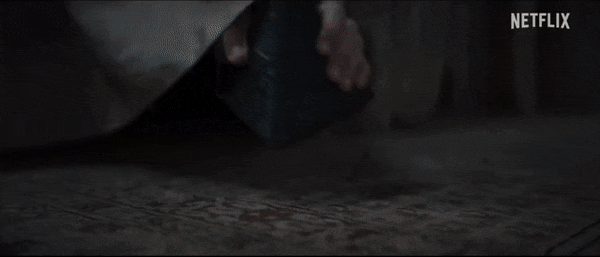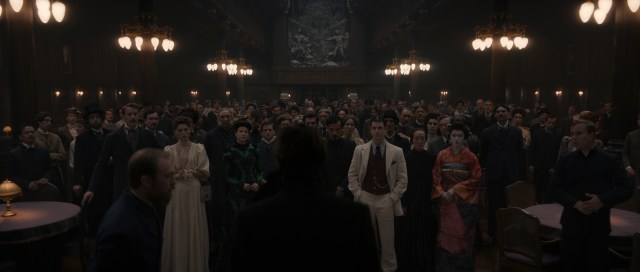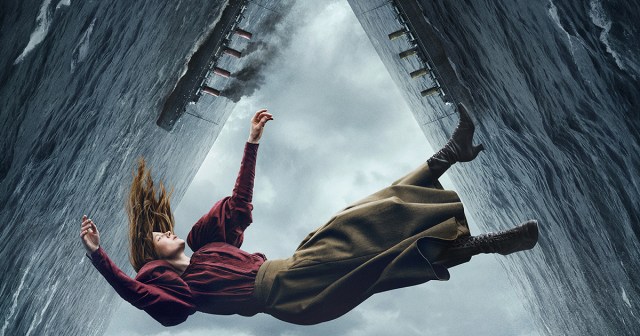
TL;DR
- The “1899” script features dialogue in eight languages: Cantonese, Danish, English, French, German, Polish, Portuguese, and Spanish.
- Watching a dubbed version of this show is not advised; its multilingual format is key to the plot, so it will make much less sense to watch “1899” in one uniform language. Subtitles are helpful, however. 🙂
- Showrunners worked with an entire language department to pull off this ambitious and culturally diverse production.
The Golden Era of Streaming boasts a plethora of excellent international series on almost every major (and minor) platform. And even those wary of a “foreign film” tedium can lean on a long list of dubbed languages, making Netflix’s “Squid Game,” “Lupin, “Kingdom,” “Money Heist,” and more accessible to viewers across the globe, sans captions. However, “1899” is one series for which the dubbing function is likely to provide as much confusion as clarity.
The reason? It’s intentionally international and multilingual, and the dubbing services don’t always catch the nuances of a script that uses blocked communication as a plot device.
Decider’s Kayla Cob notes: “The audio settings on Netflix currently have 19 different options for ‘1899.’ If your primary language is English, you’ll want to select ‘English [Original].’ Even if you select this option without turning on subtitles, the show will provide captions for the Danish, German, Spanish, French, Polish, and Cantonese characters.”
Confusion by Design
“1899” takes place on an America-bound immigrant ship, the Kerberos, and just as would have been the case at the real turn of the 20th century, its passengers and crew are of diverse classes and backgrounds.
Most productions have typically ignored or minimized the variety of languages onboard similar cinematic journeys, favoring certain European cultures for their narratives. But showrunners Jantje Friese and Baran bo Odar saw an opportunity to highlight the beauty of diversity in this experimental anthology series that features Danish, English, French, German, Polish, Portuguese, Spanish and even Cantonese.
“I hope it’s going to make English-speaking people learn and love different languages as well,” Friese told Deadline’s Tom Grater.
She also noted that more viewers seem amenable to captions these days. “That barrier that used to be there, where people didn’t want to read subtitles, that has really changed. There’s so much to discover out there apart from U.S. and UK content, it’s great to hear different voices.”
Stats back up Friese’s opinion: Grater reported in 2021 that “the rise in appetite for non-English programming is increasing rapidly, with such TV and films attracting double the number of viewers in 2020 that they did in 2019.”
READ MORE: ‘1899’ First Interviews: Netflix & The Creators Of ‘Dark’ Talk Building Europe’s Largest Virtual Production Stage To Shoot Ambitious Multilingual Series (Deadline)

“[E]ven already in film school, we had this urge to change that, to really have characters from particular countries speak in their own voices, because language really defines character, Friese told The Hollywood Reporter’s Scott Roxborough. “If you want to have an authentic performance, it’s just better when actors perform in their own language.”
For example, Aneurin Barnard initially auditioned for the role of Daniel Solace with what he describes as a “neutral English accent,” but bo Odar and Friese encouraged him to speak with a more natural Welsh accent. Barnard says, this “was extremely wonderful for me. Normally Welsh accents are used for very stereotypical comedy and sometimes done very poorly, and are not used in big productions like this. So I was charmed by the fact that they wanted to embrace and elevate it.”
Read It on Amplify: Behind the Scenes (and Screens) of Netflix’s “1899”
Additionally, language facilitates more than just character development for “1899.” It creates conflict.
“How do people cope with situations when they’re not able to speak the same language? What happens when you have all these different cultural backgrounds, that are put into a space like this?” Friese explained to Roxborough.
And if viewers opt for a dubbed version, many interactions will make much less sense. A prime example, by way of The Independent’s Jacob Stolworthy: “At one stage, when the subtitle is held back from viewers, Emily Beecham’s lead character Maura says: ‘I don’t understand what you’re saying.’ But the dub includes the translation of the line that the script wanted to keep secret from viewers.” Oops.
Writing a Multilingual Script
Even as characters were challenged on screen, the directors faced the reality of their choices.
Friese described the scripts as “Frankenstein monsters” featuring dual dialogue. “[Y]ou would have the English dialogue on the left side and then the translated dialogue for that character in their language on the right side. And every dialogue portion had a script note. And in that script note, there would be a meta-conversation about language.”
Script notes could consist of “five pages of conversation between the writer, the translator, the language expert” debating the virtues of “‘tu’ or ‘vous’” in an instance, Friese said, also noting that Final Draft, their screenwriting program of choice, struggled to handle the volume of notes.
Armed with phonetic scripts and monitors, bo Odar said he initially tried to follow the dialogue closely, but one day, he told Roxborugh something clicked and “I told myself: Let’s forget about what they’re saying and listen to how they’re saying it. Let’s look at them as music instruments.”
Friese said, “We put a lot of effort into getting things right. But in the end, it turned out to be way easier than we thought, because there’s a sort of universal language, without words, going on while you’re communicating with someone.”

